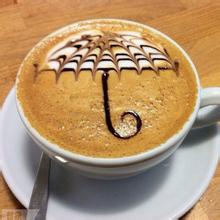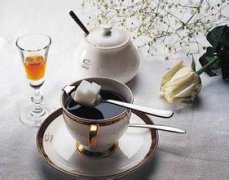The treatment method of grinding degree and baking degree of Guatemala Agua Dursai boutique coffee beans

"Slow extraction instead of fast extraction with hot water can better bring out the sweetness and smooth taste of coffee itself," Joe noticed the confusion on the editor's face, and then explained: "Different from the traditional iced coffee made by fast brewing with hot water and rapid cooling of ice cubes, slow extraction cold extraction iced coffee is like simmering a pot of old fire soup with low heat, so as to ensure the mellow taste and fragrance."
It is also richer in flavor, taste and tobacco flavor than other coffees in Guatemala. Every 30 years or so, the area near Antigua Island will be attacked by a volcanic eruption, which provides more nitrogen to the already fertile land. Moreover, sufficient rainfall and sunshine make this place more suitable for growing coffee. Its coffee belt is distributed above 1500 meters, between 14 and 16 degrees north latitude. It is most easy to grow extremely hard beans, all of which are washed. 45% of them belong to fine grade. The proportion is quite high. Guatemala extremely hard beans are elegant, lively, acidic, clean and odor-free. The layers are distinct, and green apple acid fragrance, berry fruit fragrance, jasmine flower fragrance, orange peel fragrance, green pepper fragrance, fruit acid fragrance. Sweet, chocolate sweet, etc., even the end of the rhyme has a smoky taste, bitter taste and fragrance, good taste
"If you remember last year's 'Brave Coffee' Peruvian Amazonian coffee, then you must not miss this year's exclusive cold extract blend coffee beans!" Joe continued,"It's been tasted and experimented with by Starbucks 'coffee development team in Seattle, blending coffee beans from Africa and Latin America." After that, Joe handed over the iced coffee made from the cold extract exclusive coffee beans to Xiaobian and everyone.
Antigua coffee is sought after by most coffee lovers because of its distinctive aroma. Because it is planted on the belly of volcanoes, it can retain its own characteristics more than Costa Rica, mainly because it has more geographical and climatic advantages than Costa Rica. Guatemala is located in the tropics, but due to its high altitude, the climate is mild and subtropical. Coffee trees bloom and bear fruit slower than coffee trees in other parts of the world under the influence of this climate. However, the mild climate combined with fertile soil creates an excellent environment for growing coffee.
These Mayan-run coffee industries once made Guatemala's economy prosperous and occupied a dominant position in the national economy. Unfortunately, however, the political situation in Guatemala is not conducive to these coffee growers. High output is usually a sign of overall economic prosperity in a country. However, coffee production in Guatemala has declined relatively, to only 700 kg/ha, compared with 900 kg/ha in El Salvador and a staggering 1700 kg/ha in Costa Rica. Guatemala's coffee export trade is controlled by private companies, but the National Coffee Council controls other sectors of the coffee industry.
Some of Guatemala's finest coffee is currently exported to Japan, where it sells for $3 to $4 a cup. In order to revitalize its coffee industry, Guatemala has set up a special coffee association and given maximum support and attention to these high-quality coffees. These efforts will soon bear fruit, and the real beneficiaries are not only coffee growers, but coffee lovers all over the world.
Guatemala Coffee Coffee Aristocrat
Guatemala Antigua coffee is not only smooth and hard, but also of good quality. It is a perfect combination of acid and sweet. Together with a trace of smoke, it emphasizes its deep depression and mystery.
Guatemala is located in the middle of North and South America, and its geographical position occupies an important position in Central America. Guatemala covers an area of approximately 108899 square kilometers. Land features can be divided into: volcanic plateau, lowland tropical forests, volcanic sandy coastal plains on the Pacific coast, and virgin land on the Caribbean coast. The Sierra Madre Mountains in Central America span east and west of Guatemala, covering an area of about 2/3 and containing 34 volcanoes. Rivers and lakes dot the landscape, while equatorial forests and plain jungles cover it. There are also undeveloped volcanic beaches on the Pacific and Caribbean coasts.
Coffee produced in Guatemala is one of the world's top coffees, because Guatemala is a volcanic terrain with high altitude, and these volcanoes are the most ideal places to grow coffee. The tasters prefer this spicy blend of flavors to other coffee varieties. The extra-hard coffee beans here are rare good coffee, it is full of particles, delicious, balanced acidity. Guatemala is also getting attention for its giant coffee beans
This is Guatemala Antigua, Agua volcanic region of the Dulce Sea region, this region produces 100% Arabica coffee beans, its branches are mainly bourbon, iron pickup, caduai, cadura, there are also a small number of yellow bourbon, rose summer and pacamara varieties, Antigua is a famous coffee producing area. Antigua coffee is produced at Hacienda Carmona, where the best quality coffee is EL Pulcal, which is not only of good quality, but also richer in flavor, taste and tobacco flavor than other coffees in Guatemala. Every 30 years or so, the area near Antigua Island will be attacked by a volcanic eruption, which provides more nitrogen to the already fertile land. Moreover, sufficient rainfall and sunshine make this place more suitable for growing coffee. Its coffee belt is distributed above 1500 meters, between 14 and 16 degrees north latitude. It is most easy to grow extremely hard beans, all of which are washed. 45% of them belong to fine grade. The proportion is quite high. Guatemala extremely hard beans are elegant, lively, acidic, clean and odor-free. The layers are distinct, and green apple acid fragrance, berry fruit fragrance, jasmine flower fragrance, orange peel fragrance, green pepper fragrance, fruit acid fragrance. Sweet, chocolate sweet, etc., even the end of the rhyme has a smoky taste, bitter taste and fragrance, good taste
"Unlike traditional iced coffee making methods, cold extraction requires more patience and time." Joe introduced. It turns out that after fresh grinding of coffee beans exclusive to cold extraction, they have to be slowly extracted in Toddy Brewer, a special cold extraction appliance, in order to obtain perfect cold extraction iced coffee.
Important Notice :
前街咖啡 FrontStreet Coffee has moved to new addredd:
FrontStreet Coffee Address: 315,Donghua East Road,GuangZhou
Tel:020 38364473
- Prev

The aristocratic coffee in Guatemala Agua Dulsai boutique coffee bean cultivation geographical location and climate
If you still remember the brave coffee used by Lengfei last year, Peruvian Amazon Coffee, you must not miss this year's Lengfei's exclusive Lengfei mixed coffee beans! Seeing the editor's expectant eyes, Joe continued: it was launched after several tastings and experiments by Starbucks's coffee development team in Seattle, mixed with coffee beans from Africa and Latin America. Finish talking.
- Next

Indian Coffee Bean Origin History and Culture
The Shepherd's Story: According to the Roman linguist Rothenay (1613-1707), an Arab shepherd named Caldey, who was herding sheep on the Ethiopian steppe in the sixth century AD, found it strange that each goat was excited and excited. He later observed carefully that the sheep had eaten some kind of red fruit
Related
- Detailed explanation of Jadeite planting Land in Panamanian Jadeite Manor introduction to the grading system of Jadeite competitive bidding, Red bid, Green bid and Rose Summer
- Story of Coffee planting in Brenka region of Costa Rica Stonehenge Manor anaerobic heavy honey treatment of flavor mouth
- What's on the barrel of Blue Mountain Coffee beans?
- Can American coffee also pull flowers? How to use hot American style to pull out a good-looking pattern?
- Can you make a cold extract with coffee beans? What is the right proportion for cold-extracted coffee formula?
- Indonesian PWN Gold Mandrine Coffee Origin Features Flavor How to Chong? Mandolin coffee is American.
- A brief introduction to the flavor characteristics of Brazilian yellow bourbon coffee beans
- What is the effect of different water quality on the flavor of cold-extracted coffee? What kind of water is best for brewing coffee?
- Why do you think of Rose Summer whenever you mention Panamanian coffee?
- Introduction to the characteristics of authentic blue mountain coffee bean producing areas? What is the CIB Coffee Authority in Jamaica?

